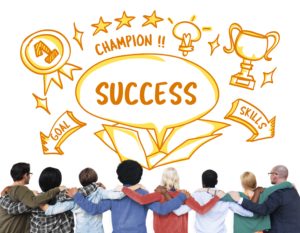
Early in my career, I received a very nice clock as an award for a job well done. Much nicer than any of the second-hand goods that filled our apartment back then, the clock found a place of honor in our home. It has continued to occupy a prominent place through moves to other homes in different cities and states. Don’t ask me for details of the specific project that I worked on to receive this recognition; I don’t remember.
What I do remember, however, are the details around how the presentation was made. It was given to me by the Vice President of Human Resources for work I performed well that added value to our organization. Most importantly, I remember how the entire presentation made me feel special and inspired me to contribute more.
“They may forget what you said, but they will never forget how you made them feel.” — Carl W. Buehner
It’s a small world. Last month, many years and miles from the day and place I received the recognition, the HR boss who had nominated me for the award connected with me via LinkedIn. It turns out that we live about 10 miles apart these days. Jon suggested we meet for lunch. I messaged him back saying I would love to see him again and thanked him for the significant role he played in my career when he took a chance on hiring me. He responded, “There was no chance in hiring you – you were a sure bet.” Once again, Jon was dispensing positive recognition and making me feel special.
Numerous articles and publications show positive recognition leads to greater retention of talent, a more engaged workforce, better organizational outcomes and attraction of candidates for recruitment, among many other benefits. Conversely, lack of recognition is a major dissatisfaction in the workplace.
Common topics in executive coaching include how to be a better leader or how to inspire others to bring forth their best ideas and work. Integral to these coaching discussions on leadership is the use of recognition.
As an executive coach and former HR leader, I have witnessed the power of positive recognition in the workplace and its significant effect on those receiving acknowledgement. Yet, we also know that recognition is sorely lacking in many work settings. The following questions are meant to be a starter to help leaders and organizations create and maintain recognition programs that sustain positive momentum:
- Is the recognition appropriate for the accomplishment? People take notice both when the reward is overly generous and when it is meager. When recognition they believe is deserved, but is not given, they notice and comment even more. Differentiation in recognition is proper and many organizations provide guidelines to calibrate such awards. If your organization does not have established guidelines, reach out to HR, Finance or a leadership peer group to help calibrate or define award levels. When criteria are defined and communicated, others in your organization can make the connection between accomplishment and recognition.
- Are you highlighting the accomplishments that align with your organizational goals? Rewarding achievement of key targets demonstrates that recognition is aligned to objectives, and that realizing progress matters and is valued.
- How can you best highlight or communicate the accomplishment in your organization? Do you have periodic communications meetings, newsletters, leadership blog posts or other events that allow you to recognize significant achievements? If not, how can this type of positive recognition be built into your processes? People look forward to hearing about success within their organization. Highlighting significant accomplishments shows that the leadership team cares.
- How will the recognition make the recipient(s) feel? While it’s important to publicly acknowledge an employee’s success, it’s vital to match the means of communicating about awards to the employee. Some people love the spotlight of recognition in team meetings, newsletters, etc. Others don’t want special attention and may prefer a lunch or a note of appreciation to go with the honor bestowed upon them. Take this into account. Know your team and respect their wishes regarding recognition whenever possible. Recognition is a personal experience, one that a person remembers.
- How can you get people throughout your organization – not just leaders – to nominate others for recognition? Peer recognition is powerful, as co-workers know who is carrying the load or demonstrating special influence on key projects. They understand not only what is being done, but also how it is being put into place. Successful recognition programs have methods to solicit positive peer acknowledgement and gratitude in their programs.
Positive recognition is a motivational force that stays with people long after the fact. Many people keep files of thank-you notes or special awards they have received; some display awards or achievement mementos in their work area or in their homes. When asked about the recognition, people usually light up as they tell you about the award, what it was for and how it was presented. You can hear and appreciate how it made them feel.
When organizations and leaders foster recognition, they create environments people value and in which they want to work.
How can executive coaching help you recognize others and achieve what’s next in the process?
##
Lance Hazzard, CPCC, ACC, is a certified Intelligent Leadership Executive Coach helping people and organizations successfully achieve what’s next. He is Executive Coach and President at Oppnå® Executive & Achievement Coaching. Find out more about Lance and Oppnå® Coaching at oppnacoaching.com